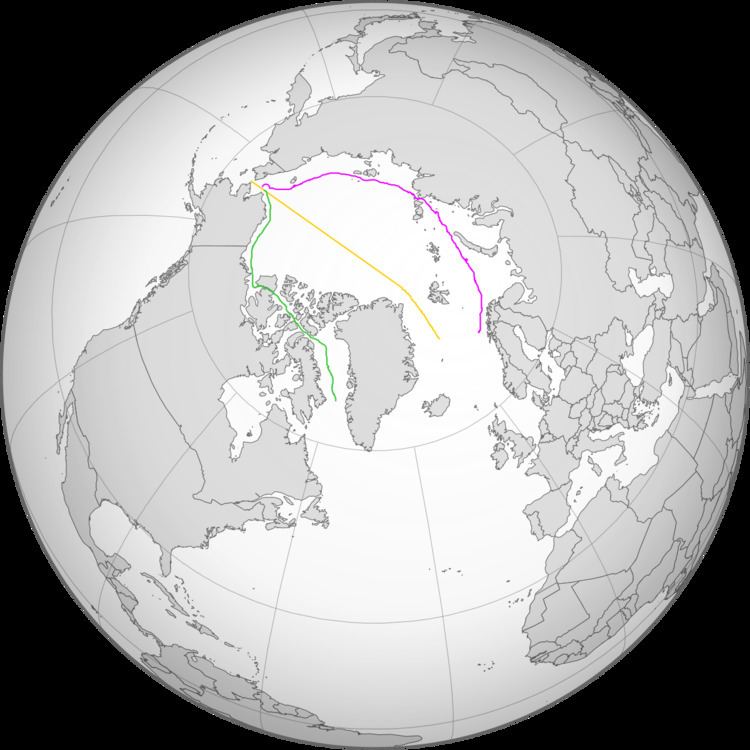 | ||
The Transpolar Sea Route (TSR) is a future Arctic shipping route running from the Atlantic Ocean to the Pacific Ocean across the center of the Arctic Ocean.
The route is also sometimes called Trans-Arctic Route. In contrast to the Northeast Passage (including the Northern Sea Route) and the North-West Passage it largely avoids the territorial waters of Arctic states and lies in international high seas. The route is currently only navigable by heavy icebreakers. However, due to the increasing decline of Arctic sea ice extent, the route is slated to emerge as the predominant Arctic shipping route by 2030.
The TSR is about 3,900 kilometres (2,100 nmi) long and offers significant distance savings between Europe and Asia. It is the shortest of the Arctic shipping routes. In contrast to the Northern Sea Route and the North-West Passage, which are both coastal routes, the TSR is a mid-ocean route and passes close to the North Pole. Due to high seasonal variability of ice conditions throughout the entire Arctic basin, the TSR will not exist as one fixed shipping lane, but will follow a number of navigational routes.
The TSR passes outside the exclusive economic zones of Arctic coastal states making it of special geopolitical importance to countries looking towards to Arctic as a future trade route. While a number of legal disagreement and uncertainties revolve around both the North-West Passage and the Northern Sea Route, the TSR lies outside the territorial jurisdiction of any state. The Chinese icebreaker Snow Dragon was one of the first major vessels to utilize the route during its 2012 journey through the Arctic Ocean.
